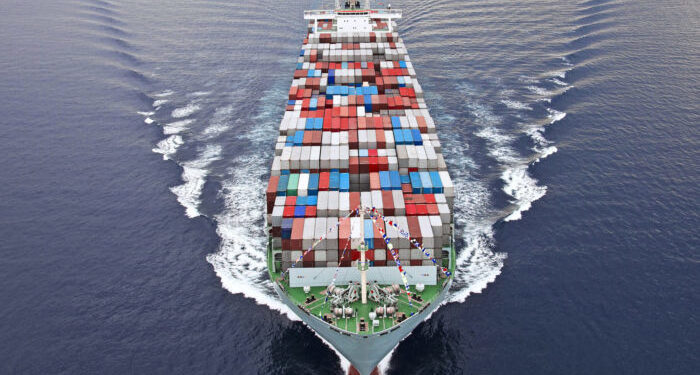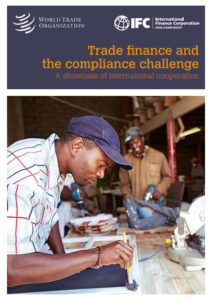The lack of availability of trade finance is impeding the trade opportunities of small businesses, specifically in developing countries, according to a new publication by the World Trade Organization (WTO) and the International Finance Corporation, launched on 3 July at the Global Review of Aid for Trade.
The publication, entitled “Trade Finance and the Compliance Challenge: A Showcase of International Cooperation”, looks into the reasons for the growing reluctance of the global financial sector to engage in this form of financing and presents case studies of capacity-building programmes organized by the international community to address this issue.
The report underscores the vast trade finance gap of $1.5 trillion that currently exists and delves into the reasons why international banks are not engaging sufficiently in this financing.
It highlights the challenge of regulatory compliance and the efforts made by international organizations, such as the WTO and the International Finance Corporation, to address the issue.
Key points
- Up to 80 % of trade is financed by credit or credit insurance but availability of finance varies across regions. A lack of trade finance is a significant barrier to trade, particularly (but not exclusively) in developing countries.
- Small and medium-sized enterprises (SMEs) face the greatest hurdles in accessing affordable financing. The poorer the country in which they are based, the greater the challenges SMEs face in accessing trade finance. 75 % of rejected requests for trade finance relate to SMEs. The number of international banks involved in trade finance continues to decline.
- The estimated value of unmet demand for trade finance is US$ 1.5 trillion annually. About 40 % of this unmet demand is in developing Asia, and 10 % is in Africa. Bridging this gap would unlock the trading potential of many thousands of individuals and small businesses around the world.
- Gaps in trade finance provision are widest in developing countries, where opportunities to trade are increasing as global production patterns evolve.
- The reluctance of the global financial sector to invest in developing countries after the 2008-09 financial crisis compounds the problem of gaps in trade finance in certain countries because local banks require trade finance transactions to be settled in the currency of the transaction, which requires the participation of banks in the country which issues that currency. Local banks need international correspondent banks to confirm their letters of credit, engage with them in supply chain finance and clear trade-related payments in foreign currency.
- Some 200,000 correspondent banking relationships, over about a million in total, have disappeared since the end of the financial crisis. Africa, the Caribbean, Central and Eastern Europe and the Pacific Islands are the regions most affected by the termination of correspondent banking relationships. Flows of trade finance are particularly affected.
- In developed countries, there has been a heightened perception of the regulatory risk of operating in developing countries since the adoption of new anti-money-laundering and countering the financing of terrorism (AML/CFT) regulations and other regulations involving sanctions (particularly regulations pertaining to trade and financial sanctions). The adoption of these regulations has played a significant role in the decisions taken by many global banks to terminate certain correspondent banking relationships.
- Local banks, in turn, have found themselves faced with varying levels of demand from foreign jurisdictions in terms of complying with regulations, and they are often hardpressed to comply with all of the new requirements. They risk being marginalized within the financial system, with consequences for the economic development of the countries in which they are based.
- More inter-institutional cooperation is needed to address the shortages of trade finance which are hindering the trade opportunities of many developing countries.
This mobilization is crucial to help traders and their financial institutions to adapt to the new regulatory environment. We need to keep sustained efforts to ensure that trade finance flows will return to countries which have been deserted, or de-risked, in recent years. This is a very good example of international cooperation in action, achieving real, practical results on the ground. The gaps I’ve described will not disappear overnight. They require the consistent efforts of our organisations and others, working together permanently. So let’s keep up this momentum,
…said Director-General Roberto Azevêdo at the launch of the report.
Low-income and fragile countries account for over half of our commitments under our flagship trade program and we aim to increase that share through various trade programs we have…Let us help central and local banks build capacity and implement new platforms and tools that effectively respond to compliance and regulation challenges,
…added IFC’s CEO Philippe Le Houérou.
Explore more herebelow:





























































